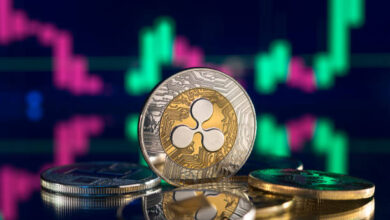Blockchain Consultant Explains How XRP Holders Can Profit from XRPL’s Upcoming AMM Without Risking a Single XRP Token

Blockchain consultant Panos Mekras, who is the Founder of DigitalGen Financial Services, Co-Founder of startup Anodos Finance, and author of the book “Understanding the Crypto Economy: A Full Guide for Beginners“, recently posted a thread on X (formerly known as Twitter) about the profit opportunities awaiting XRP holders with the upcoming introduction of a new Automated Market Maker (AMM) feature on the XRP Ledger (XRPL).
The most recent version of the XLS-30 proposal, revised on August 4, 2023, by Dr. Aanchal Malhotra, the Research Head at RippleX, and David Schwartz, Ripple’s CTO, aims to integrate non-custodial Automated Market Makers (AMMs) directly into the XRP Ledger’s decentralized exchange (DeX). The proposal describes an innovative profit-sharing approach that enables liquidity providers to capture a large portion of the profits usually earned by arbitrageurs. This is made possible by perpetually auctioning trading benefits to arbitrageurs and imposing fees on them, which are subsequently distributed among liquidity providers.
In the XLS-30 framework, each AMM instance is engineered to levy a trading fee spread when trades shift the token ratios within their liquidity pools. These collected fees are then funneled into the AMM’s capital pool, thereby amplifying the returns for those providing liquidity. Moreover, the largest shareholders within each AMM instance are endowed with governance rights, granting them the authority to determine the trading fees levied by that particular instance.
The proposal also envisions a frictionless interface between the AMM-based and the limit order book (LOB)-based trading systems on the XRPL DeX. This integration ensures that traders can access a full range of order flows and liquidity options across both types of platforms. The system’s payment and order placement algorithms are designed to automatically source the most advantageous prices for users by considering options across both AMMs and LOBs.
The XLS-30 feature is anticipated to be incorporated into the 1.12 version of “rippled,” the open-source software that underpins the XRP Ledger. This update is planned for September 11, 2023, but its final inclusion is contingent upon approval from all active XRPL-UNL validators.
In the traditional finance space, Panos Mekras points out that the correspondent banking model for foreign exchange (FX) settlements creates complexities and additional costs for users. Citing the Bank for International Settlements’ 2022 Triennial Survey, Mekras notes that roughly a third of daily deliverable FX turnover, equating to around $2.2 trillion, is exposed to settlement risk.
Mekras goes on to describe the cumbersome process that FX traders must navigate. Initially, traders have to deposit funds into their broker’s account, incurring fees. Subsequently, the broker submits the trade to a bank, which also charges fees. Finally, the bank completes the trade on the open market, incurring additional fees.
Mekras observes that, surprisingly, on-chain FX has yet to make a significant impact in the crypto world, despite its apparent suitability for decentralized finance (DeFi). However, he believes this is gradually changing.
He elaborates on the multiple advantages that DeFi, through AMMs, offers over traditional finance for FX transactions. These benefits include quicker, more cost-effective, and more efficient value transfers. Mekras also mentions that atomic, payment-versus-payment (PvP) transactions enabled by blockchain technology can eliminate the settlement risk where one part of a transaction is settled without the other, a risk that currently stands at over $2.2 trillion.
According to Mekras, AMMs use passive asset owners as liquidity providers to enhance market depth, mitigate the risk of sudden market crashes, and offer continuous liquidity as opposed to markets that close on weekends and bank holidays.
Mekras emphasizes the enormous opportunity that lies ahead with the upcoming XRPL AMM. He suggests that on-chain FX could be adopted by various payment networks like Ripple, financial institutions, businesses, and even individual traders. These entities can trade currencies and provide liquidity, thereby earning fees from FX trading activities.
For those who hold XRP but are hesitant to risk it, Mekras advises focusing on FX pairs like USD/EUR. He argues that if major players engage with the AMM, both individual liquidity providers and traders stand to gain substantial income with minimal risk and asset volatility.
Mekras also discusses the potential benefits of on-chain FX for small and medium-sized enterprises (SMEs). He notes that traditional methods of hedging FX risks, such as using multi- or single-dealer platforms, can be costly and may not be accessible to SMEs. On-chain FX, facilitated by AMMs, can offer SMEs significant cost savings and risk reductions.
In his concluding remarks, Mekras states that the near-instant settlement and round-the-clock availability of on-chain FX can provide SMEs with substantial cost and risk advantages. Moreover, AMMs are particularly well-suited for smaller transactions, aligning well with the needs of SMEs. He also sees a significant opportunity in the tokenization of real-world assets like treasuries and precious metals, which could be issued on the XRPL AMM by reputable institutions, thereby expanding liquidity options.





